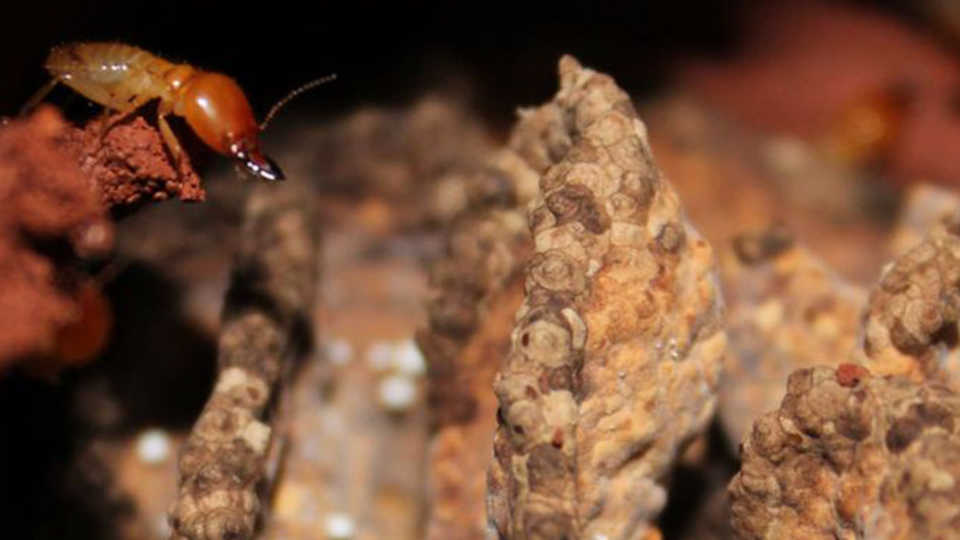Science News
Termite Farmers

The search for better biofuels could get a boost by learning from a termite. These insects have been converting plant material to energy very efficiently for 30 million years. And they’ve devised some pretty creative solutions along the way.
Termites are known for digesting seemingly indigestible plants with the help of their gut microbes. But the Macrotermitinae in Sub-Saharan Africa and Southeast Asia use a little extra help. Remarkably, some of these termites decompose up to 90 percent of all dead plant material through intricate multi-stage cooperation between their gut bacteria and the Termitomyces fungi, which the termites farm.
That’s right—farm!
Termites manage their towering mound of fungus in a highly structured way. Older termite workers collect plant material and bring it to the nest. Younger workers eat the plant material along with spores of the Termitomyces fungus, then defecate a plant-fungus mixture as a new layer of fungus garden, boosting growth of more fungus. Older termites at the mature fungus spend their time gardening. By then, nearly all organic matter has been broken down.
To determine how this all works and what role each critter plays, researchers sequenced the genomes of the termite (Macrotermes natalensis), the fungus, and the bacteria. The team found that the bacteria and the fungus play equally important roles in this extremely efficient digestive process. “While we have so far focused on the fungus that feeds the termites, it is now clear that termite gut bacteria play a major role in giving the symbiosis its high efficiency,” says Michael Poulsen of the University of Copenhagen, lead author of a new study that examines the process.
“It took a massive effort of sequencing the genome of the termite itself, its fungus, and several gut metagenomics to analyze the enzymes involved in plant decomposition,” adds co-author Guojie Zhang, also of the University of Copenhagen and BGI-Shenzhen.
The team discovered that enzymes in the fungus handle the complex carbohydrates of the plant material, while gut microbes contribute enzymes for the final digestion.
Termite colonies are founded by a single queen and king: they disperse by air but lose their wings when locking themselves up for life in an underground royal chamber. As the colony grows, the queen swells up to gigantic proportions and becomes an egg-laying machine.
The royal pair may survive for decades and maintain a very large colony of short-lived workers and soldiers, who take care of all colony duties. The metagenomic analyses of the queen gut showed that it contains a highly simplified bacterial community lacking plant decomposition enzymes. This suggests that the queen receives a high-quality fungal diet from its workers.
It’s good to be the queen! Even a queen amongst farmers.
The research is published this week in the Proceedings of the National Academy of Sciences. Ed Yong describes the results on his blog at National Geographic, and you can read more at Liberty Voice as well.
Image: Saria Otani